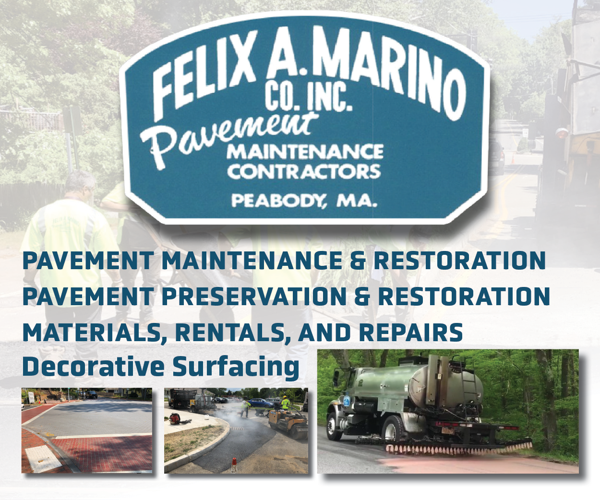The primary aim of the nearly $1 billion Improve 95 Program is congestion relief. When construction is complete on the various projects, the agency anticipates improved driving conditions in the corridor of I-95 near Fredericksburg, Virginia, which has been identified as one of the worst bottlenecks on the East Coast.
What’s led to the bottlenecks? Overall growth in the local area is a major reason. In the area where the project is taking place, the average daily traffic count in 2017 was 74,000 vehicles. It’s expected to rise to 120,600 vehicles by 2039. It’s a major trucking route as trucks make up 20 percent of the traffic during the daytime and 44 percent at night.
In this section of Virginia, I-95 crosses the Rappahannock River. Traffic often bottlenecks at the river between Fredericksburg and Stafford County. Drivers have little choice as to where they cross the river, as the next major crossing – other than the immediately adjacent Route 1 – is approximately 30 miles west of Fredericksburg. Route 1, being urban in nature in the city, causes local traffic to proceed to I-95 to move within the local area.
Along these 3 miles, the team built three additional bridges over Route 17 in Stafford County as part of the project. The northbound and southbound overpasses over Route 17 were replaced to raise their vertical height.

| Your local Trimble Construction Division dealer |
|---|
| SITECH Northeast |
As it currently stands, there’s a significant amount of local traffic on I-95. Approximately 15 percent of all vehicles on I-95 travel between the two interchanges – exit 133 (Route 17) in Stafford and exit 130 (Route 3) in Fredericksburg.
The three new I-95 southbound lanes were built in the I-95 median to carry through traffic. Local and through traffic is divided before the Route 17 interchange. Through lanes and local lanes merge together south of the Route 3 interchange.
“The three new through lanes allow long-haul traffic to travel separately from local traffic,” said Jerry Whitlock, a Design-Build Integration Manager for Wagman Inc., based out of York, Pennsylvania – the general contractor for the project. “It also minimizes the number of weaving vehicles, which decreases congestion and improves safety."
The bridge, which is 1,200 feet long, is over 100 feet above the river. Access to the river is very steep. It includes a pedestrian and bicycle trail network. “We had to develop and coordinate a plan to get in and out of the river and maintain public access, which required us talking to all the stakeholders,” says Robert Ridgell, VDOT’s Megaprojects Engineer, who is serving as the Project Manager.
Another challenge – the Rappahannock is a fast-rising river, and the work zone is highly flood-prone. On three occasions, the fast-rising river destroyed a stone bridge causeway the team built to stage equipment and work in the river.

| Your local Hyundai dealer |
|---|
| Equipment East |
On large projects such as these, noted Whitlock, utility relocations can be challenging. This project has been no different. However, the issues that lead to the challenge are atypical. “Emergencies have come up for the utility owners. They have had to pull their crews off this project outside of the typical emergency seasons of fall and winter.” So, crew availability has been an issue.
Because VDOT is working on three projects that are near each other, including work on the northbound side of I-95, there have been challenges. “There has been extensive coordination and review, so procurements remain fair, and work areas are sufficient,” Ridgell said. “Design has to be shared, reviewed, and coordinated on all three projects to ensure each contractor can work without impeding each other.”
“If there are issues in the field, and we need to adjust the design, there’s not a lot of back and forth,” Whitlock said. “A designer comes to field, VDOT comes to the field, and we come to a mutually beneficial resolution.”
Construction, which began in August of 2018, is scheduled to run through May 2022. The second southbound I-95 bridge over the river opened to through traffic in October 2021, ahead of schedule. All southbound lanes near the exit 130 interchange opened to the public in March. The team continues work on final elements, such as offsite drainage and stabilization.
Ridgell and Whitlock believe collaboration has enabled the team to complete the project early. “We address the tough problems head on, so there are no surprises and no avoidance,” Ridgell said. Whitlock added, “We don’t sit on problems. When something arises, we get it out to the entire team.”

| Your local Volvo Construction Equipment dealer |
|---|
| Tyler Equipment |
The project had a $132 million budget. Approximately 60 percent of the funds came from various sources within the federal government, including an Atlantic Gateway grant. The state put up the remainder of the funds. The initial Design-Build contract was $101.6 million, but the final bill is $114 million.
This project is slightly over budget due to change orders. The change orders were necessary to facilitate the adjacent projects and allow them to be built unencumbered. Additionally, some of financial investments improved the overall project to include full width shoulders for safety and facilitating future construction of pedestrian facilities adjacent to Route 17 in Stafford.
The team was also able to move the project along because they designed the bridge before completing geotechnical boring in the river. During procurement, access to the river for boring was a substantial challenge, but the team worked closely with their geotechnical partner, Schnabel Engineering for solutions. Wagman and Schnabel were able to draw sufficient information and reliability about the river’s bed conditions to take a calculated risk on foundation design, with borings not being conducted until construction for confirmation of the assumptions.
One of the key components to the Wagman team’s proposal was the use of traffic diversions along I-95 to allow the three Route 17 bridges to be constructed outside the travel lanes. This minimized impacts to the traveling public, compared to the typical phased construction. Wagman provided a comprehensive analysis demonstrating the overall public benefit and project benefit of these major traffic diversions and received permission to proceed.
The new I-95 overpasses of Route 17 have been raised to remove height restrictions, making it easier for truckers to navigate the corridor and a reduction in maintenance costs to VDOT due to frequent bridge strikes.

| Your local Case Construction Equipment Inc dealer |
|---|
| Beauregard Equipment |
| Monroe Tractor |
Drivers in the area have faced significant delays for years. With the completion of this project, and the others that make up the Improve 95 program, highway users will see a substantial improvement to travel times, particularly during peak hours.
Photos courtesy of Wagman Inc.








































































